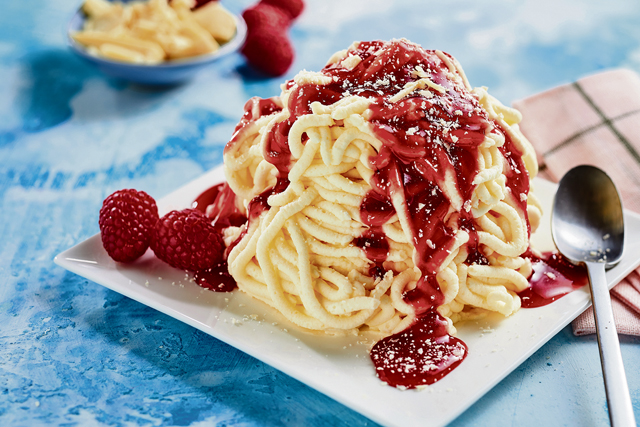
Have you ever enjoyed a spaghetti ice-cream with soft vanilla gelato in strings, topped with raspberry sauce, white chocolate shavings and a dab of whipped cream underneath on a hot sunny day?
We can enjoy this refreshing treat thanks to seventeen-year-old Italian Dario Fontanella, who worked in his father’s ice-cream parlor in Mannheim. On April 6, 1969, he had the coolest idea of his life when he served the first dish of his icy creation. Unfortunately, young Dario failed to put a patent on his sweet treat and it quickly became a popular refreshment throughout the nation.
As many others, Dario’s family immigrated to Germany in the 1950s when the nation experienced an economic boom along with a shortage of workers. In 1955 Italians were invited to work in Germany as “guest workers” upon German government initiative.
Further contracts were settled with Spain and Greece in 1960, Turkiye in 1961, Portugal in 1964 and (former) Yugoslavia in 1968. This brought about waves of immigrants and created a multinational culture including their favored dishes. In 1964 the Minister of the Interior personally welcomed one-millionth guest worker Armando Rodrigues from Portugal.
Italian gelato parlors and pizzerias sprang up everywhere, Greek and Portuguese restaurants catered to hungry customers and a Turkish immigrant opened the first kiosk selling Döner Kebab in Berlin in the 1980’s.
Initially the mainly male guest workers were sought to work for a few years to then return to their home countries. However, scores of family members made their way to reunite, turning Germany into their permanent home.
Numerous Italians from Cortina d’Ampezzo, a small town in the Dolomitic Mountains in northern Italy, opened ice-cream parlors around the nation under the name “Cortina.” Restaurants called “Antalya,” “Kriti” or “Lisboa” are reminiscent of their home countries. The largest group of workers came from Turkiye in the 1980’s, developing into the largest community outside of the country with 101,000 Turks or descendants alone in Berlin.
The following decades brought immigrants from Asia and India, people from Mexico, South America and from African countries. Americans also contributed to shaping culinary culture with typical burger joints, hot dogs, fried chicken and Coca Cola after World War II.
After the fall of the Berlin Wall in 1989, great numbers of East Germans swarmed to the west. In the early 1990’s about two million so-called “Russian-Germans” returned to their roots from the former Soviet Union, bringing with them specialties such as Soljanka, while another 1.2 million Poles and people of East European countries and their dishes found their way to German tables.
2016 brought a huge wave of refugees from Syria, Afghanistan and Iraq to the country and yet again, with tasty recipes in their luggage. Over one million refugees from the Ukraine have found temporary homes in Germany since 2022, alone 5,000 in the Westpfalz region and 58,000 in Berlin.
According to a 2021 census people of 144 different nations live in and around Kaiserslautern. They have created a diverse melting pot of cultures in Germany throughout the ages.
Together with typical German and Palatinate specialties, they offer a colorful buffet of exotic, spicy, tasty, sweet, sour and delicious dishes in the region, including Guinness from Ireland or tarte flambée from the Alsace, but not to forget Dario’s infamous spaghetti ice-cream.
Are you getting hungry yet?


